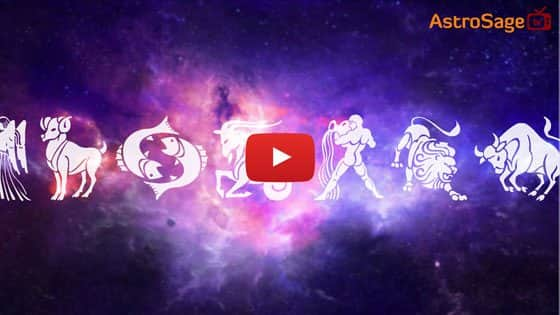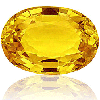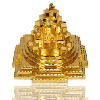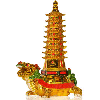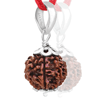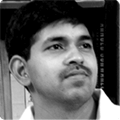Care of the Brain and Nervous System

The chief physiologic activities which distinguish a man from a brute are those concerning the brain and the nervous systems. While fully realized in its true significance by the ancient yogins thousands of years ago and utilized in formulating the yoga technique for both the body and mind Hatha and Raja Yoga only recently, for at most a hundred years, the correlation of intelligence with the cerebral evolution and especially with the extent of the cortex has become universally accepted. Starling says that in proportion as the cerebrum becomes prominent, the animal is less and less machine like. In the brain of man, this development corresponding with higher intelligence, reaches its most conspicuous rank.
BRAIN AS AN ORGAN OF MIND
In treating of the brain as an organ of the mindstuff (citta) it should be made clear that the author uses the word "organ" merely in the sense that it is part of that vehicle the molecular changes and biologic activities of which constitute the essential correlatives of the various phases of sell consciousness (citisakti). Further the interactivation between prana and citta bionergy and self consciousness and vice versa even though wrongly termed psychobiologic parallelism by the modern scientists should not be underestimated or over looked, as it is the only and by far the best working hypothesis for the physiologists.
Although contemporary investigations were in progress B.C. 700 to B.C. 200 the practical yogins did not share the belief of the ancient Indian medical science in regard to the origin and seat of consciousness. "In Caraka and Susruta (as in Aristotle) the heart is the central organ and scat of consciousness; but in [Yoga and the later181] Tantric writings (as in Galen) the scat of consciousness is transferred to the brain or rather the cerebra spinal system. Even some of the early Upanisads like Chhandogya, Prahia and others and many non Indian investigators did not fare better or escape the fate of ancient Indian medical students. Thus, unlike Plato, Aristotle held the heart, not the brain, to be the central organ or scat of the soul.
This may be due to two facts (i) that the cerebral hemispheres are insensitive to stimulation and (ii) that the circulation of blood and the reflexes of emotions and impulses are more readily and prominently felt in the area of the heart than else where.
In contrast, from the very beginning, it was definitely held by scientific Yoga that the brain in cooperation with the elaborate nervous systems is mainly responsible for transmitting all impulses, expressions and affects of both the subjective and objective psychology, and thus represents the real physical medium, basis or aspect of all mental activities. It was further held by the yogins that all the activities of a living organism are due to the presence of bionergy (prana) and that the process of intellectualization belongs to the power of consciousness (cittisakti). Consequently, the relationship between consciousness and experience and the process thereof is somewhat like this:
The five external senses through their respective physical organs like the eye, the cur, the nose and the skin etc., come is contact with the objects of knowledge, and the feeling complexes thus recorded are carried by the nerve impulses (pranavayus) to the brain assisted by the five internal senses. "At the first movement of this touch there is an indeterminate consciousness in which the particulars of the thing cannot be noticed. This is called indeterminate perception (nirvikalpa pratyaka.) At the next moment by the function of the synthesis (samkalpa) and analysis (vikalpa) of the mind organ (manas) the thing is perceived in all its determinate character; the manas differentiates, integrates and associates the sense data received through the senses, and thus generates the determinate perception, which when intelligized by (the power of consciousness and is associated with the self) purusa becomes interpreted as the experience of the person."
YOGA NEUROLOGY
Scientific Yoga, while recognizing the two distinct operations of the cerebrospinal and autonomic nervous systems, regards them as one whole in which both the activities are closely interwoven (otaprotah). Of these, the cerebrospinal system consists mainly of the saharsadala (brain) and the susumna (spinal cord) contained within the cavities of the cranium and the spinal column (merudanda) respectively. The autonomic system is largely composed of a double chain of ganglia (idd and pitigala) situated on each side ida to the left and pingala to the right of the susumna and extending from the base of the skull to the tip of the coccyx (mulddhdra). It is also evident that the ancient yogins were quite familiar with the varied forms of decussation (samslisya) of the nerve fibers.
The network of the entire nervous system is delicately interwoven by seventy two thousand nadis (nerves) apart from the endless but minor nerve endings and end organs. Of these, only sixty two pairs are regarded as of specific importance. Of these latter pairs, however, only fourteen have been considered by the yogins for further investigations. Great importance, especially from the yoga point of view, has been attached to the activities of the three main nerves, the susumna whereby bionergy functions as an organ of prana conduction and the ida and the pingala which further coordinate and control all the voluntary and involuntary functions of the human body which the scientific yogin desires to bring under his own volition, and which he ultimately achieves.
A GREAT TELEGRAPHIC SYSTEM
Strange though it may seem, the practical yogins were not unaware even at such an early date as B.C. 200 of the exact working of the nervous system. This knowledge is now being corroborated by the modern scientists with very little variation in the fundamentals. How such knowledge was possible to the yogins will be discussed elsewhere. Suffice it to say that the terminology used by them to express in precise scientific terms the activities of the nervous system is indeed remarkable.
For popular understanding, however, the working of the nervous system as conceived by Yoga can be explained in terms of an electric plant, a telephone exchange or more correctly a great telegraphic system. Thus, we are told by the commentator Kalicarana that the nerve fibers (naditantu) represent exceedingly fine tissues like those of the spider's threads, and these connect all the nerve centres throughout the body like cobwebs. In fact, it is the movement of bionergy within these nerves that sustains all living organism. Death is indicative of the absence of prana.
What is significant is that the yoga neurology once again did not share the early speculations of the ancient Indian medical authorities with regard to the manner of action of nerves as mere tubular conduits, but held that these fine nerve fibres are like electric cables which transmit the bionergy (prana) activating the nerve impulses (pranavayus) in a series of electric discharges (vidyunmalavilasa). This latter view is now acknowledged as being the only correct representation of the action of nerves by the leading physiologists like Tashiro, Bayliss and others.
Two investigators, Crehore and Williams, of New York have recently attracted much notice by their contention that all nerve impulses are actually electric in their nature.154 A practical demonstration, somewhat of this nature, was offered by the author of the present work at New Jersey, U.S.A.in 1921.lr'5 It has been further maintained by the yogins that the electric discharges which transmit nerve impulses are governed by the positive and negative animal magnetic currents corresponding to the activities of the right and the left nostrils respectively.
Astrological services for accurate answers and better feature
Astrological remedies to get rid of your problems

AstroSage on MobileAll Mobile Apps
AstroSage TVSubscribe
- Horoscope 2025
- Rashifal 2025
- Calendar 2025
- Chinese Horoscope 2025
- Saturn Transit 2025
- Jupiter Transit 2025
- Rahu Transit 2025
- Ketu Transit 2025
- Ascendant Horoscope 2025
- Lal Kitab 2025
- Shubh Muhurat 2025
- Hindu Holidays 2025
- Public Holidays 2025
- ராசி பலன் 2025
- రాశిఫలాలు 2025
- ರಾಶಿಭವಿಷ್ಯ 2025
- ਰਾਸ਼ੀਫਲ 2025
- ରାଶିଫଳ 2025
- രാശിഫലം 2025
- રાશિફળ 2025
- రాశిఫలాలు 2025
- রাশিফল 2025 (Rashifol 2025)
- Astrology 2025

























